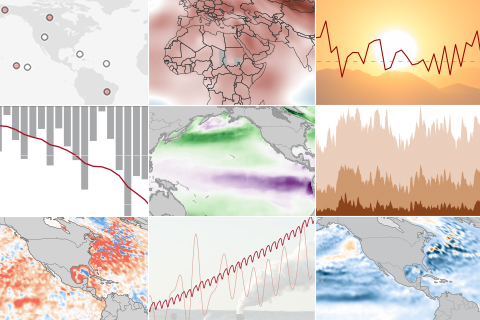
See highlights from the 2017 issue of the planet's most comprehensive annual physical, the American Meteorological Society's State of the Climate report.
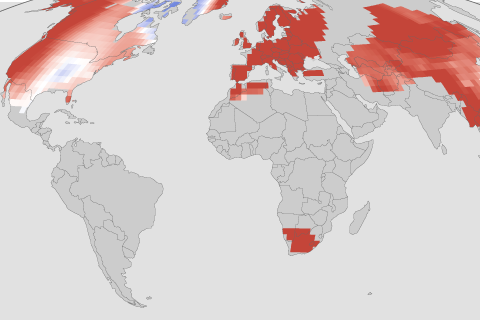
Globally, 2015 set a new record for the most extremely warm days in the 66-year record (1.8 times more than the average). The number of extremely warm days and nights was the highest ever recorded in western North America, parts of central Europe, and central Asia.

2015 was a tough year for vegetation, both natural and agricultural, with a near-record area of global land surfaces in some state of drought.
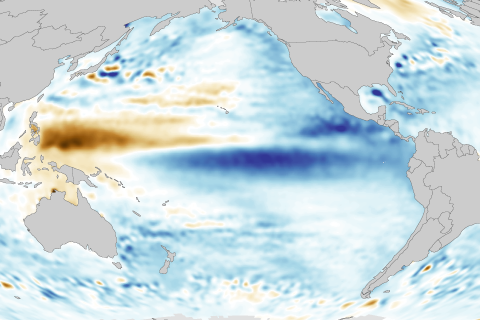
The global mean sea level in 2015 was approximately 7 centimeters (2.7 inches) above the 1993 average, making it the highest observed since the satellite altimeter record began in 1993. Regional variations highlighted the short-term influence of climate phenomena like the Pacific Decadal Oscillation and the largest El Niño event since 1997/98.
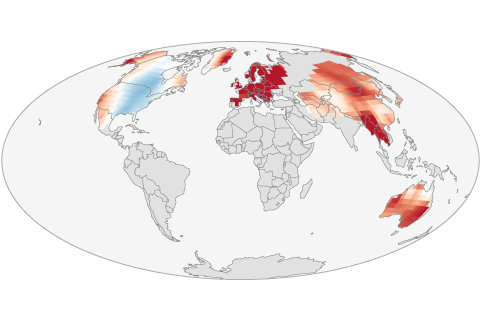
Cool conditions prevailed across large parts of the North America in 2014. Everywhere else, the frequency of warm days was higher than average, and the frequency of cold nights was below average.

In 2014, global average sea level was 2.6 inches (67 mm) above the 1993 average, which is the highest yearly average in the satellite record.
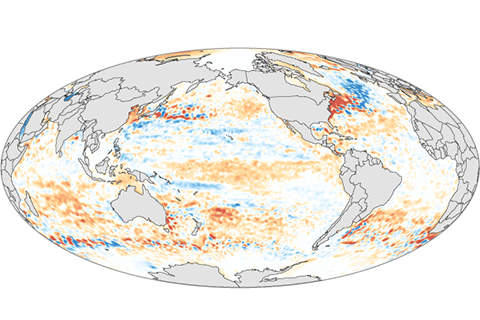
In 2014, the upper ocean held more heat than average throughout most of the major ocean basins.
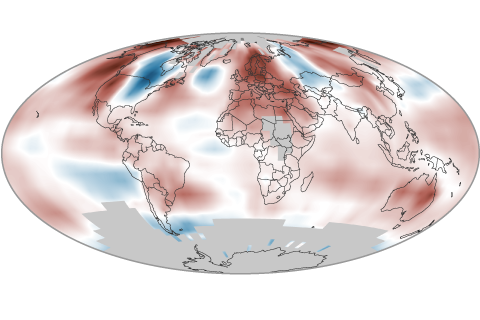
Depending on the data set, 2014 was either the warmest or tied-for-warmest year since records began in the mid-to-late 1800s.

In 2014, precipitation over land was generally below average, while precipitation over the oceans was above average.
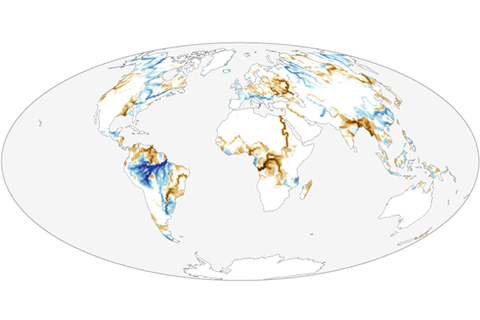
Overall, average global river outflow in 2014 slightly exceeded the climate normal.